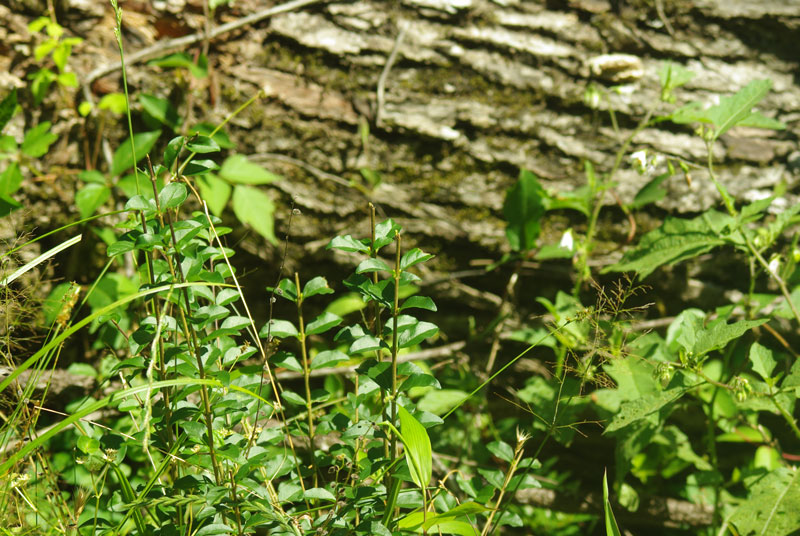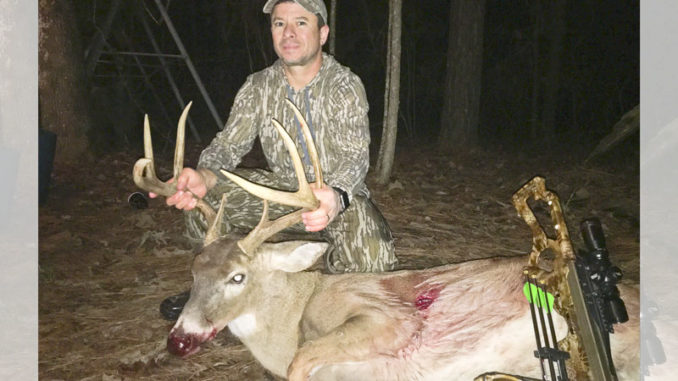
Food plots aside, natural browse is the most-important of any food available to deer in Louisiana. Learning to recognize which plants are important and when can help you manage your deer population to the fullest.
When it comes to a club or landowner having a quality deer-management program, nutrition is at the top of the list. As the saying goes, one is what one eats.
Most hunters are looking for adult bucks with racks that score 130 Boone & Crockett points or better. That’s a pretty tall order for much of Louisiana’s deer habitat; it’s not going to happen in a dominant pine forest. Urban sprawl is having an impact on much of the mixed pine/hardwood habitat, and that is having an affect on herds in many parishes.
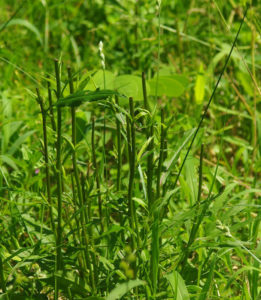
In southeast Louisiana, state biologists reduced the deer limit to three in response to the idea of declining deer numbers. Not all of that area has seen this decline. On our property in East Feliciana Parish, deer numbers have remained good, as they have in most of the parish. The most-productive deer habitat is bottomland hardwoods, located in agricultural areas. The fertile crescent formed by the Red River and Mississippi River is the heart of big buck country.
Deer browse survey
A deer browse survey will reveal to a landowner or club what plant species are on the landscape, the quality of the forage, how much quality forage is available and what forages deer are eating. A browse survey can also provide hunters with a good estimate of deer numbers. The Louisiana Department of Wildlife and Fisheries has biologists willing to assist clubs and landowners with survey work. Now is the time to be looking at the habitat.
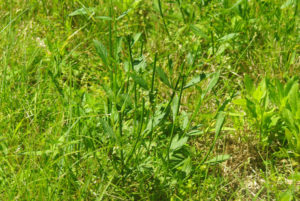
On our habitat, I have seen the browsing pressure go from moderate in early March to heavy in late May. Spring and summer are the growing months for whitetails. Bucks are increasing in body size and growing a new set of antlers. Does are pregnant and will be dropping fawns as early as May. If quality forage is available, the response of deer to good nutrition will be positive. If nutrition is lacking, body growth, antler growth and fawn production will be poor. Consequently, nutrition is the key for a successful program.
The plants deer eat
Deer forage can be listed by groups: trees, shrubs, vines, herbaceous plants and agriculture. In spring and summer, the focus of nutrition should be on plants rich in protein. During fall and winter, the nutritional needs of deer changes to forages that provide fat and carbohydrates — foods that will help maintain deer during the stressful winter.
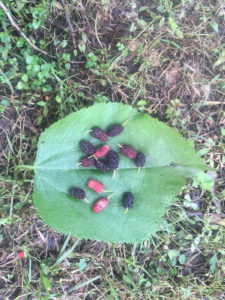
The key is to maintain habitat that will provide the foods that deer need during the changing seasons. Intense pine management has eliminated the mast foods — acorns and pecans — from the landscape and that is why we see so much emphasis on feeding corn. If managers learn to recognize the important species in these plant groups, they will be ahead of the game. Managers can determine if their habitat provides the nutrition deer need and make plans to improve deficiencies.
Trees
Forest hardwoods provide deer with browse and mast — both hard and soft — and fruit. Important species in this group are the oaks, pecans, persimmons, black cherry, elm, red mulberry, pears, crab apples and mayhaws. Of course, these are not all of the hardwood species that provide browse, fruit or mast for deer, but these are some of the best. From a browse perspective, deer are feeding on the tree regeneration, seedlings that are one to three years old. Oaks can be heavily browsed in the spring, and sometimes, it is necessary to cage oaks. Black cherry provides both browse and soft fruit. Red mulberry is an excellent tree for deer. The leaves are rich in calcium, and the black fruit is eaten by everything.
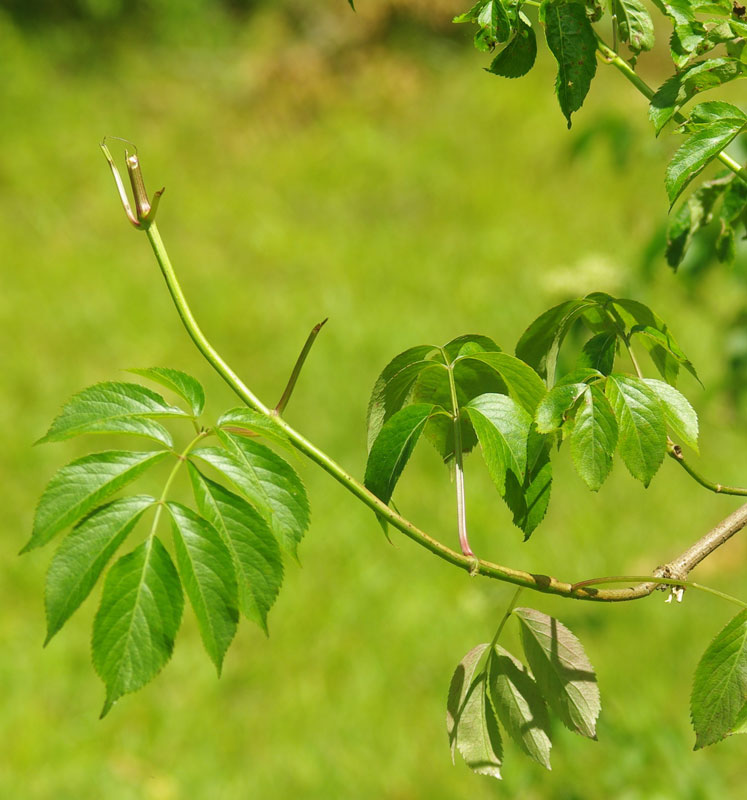
Shrubs
Important shrubs for deer include elderberry, arrowwood, deciduous holly, dogwoods and privet. Elderberry is at the top of the list, and if elderberry is missing on your habitat, a red flag should go up; it is time to determine why. Privet is considered an invasive species, but the fact is, it is a mainstay in the year-round diet of deer in many areas of Louisiana.
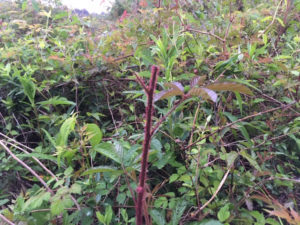
Vines
Vines are important from a browse standpoint. Top vine species for deer include trumpet creeper, muscadine (browse and fruit), smilax or greenbriar, blackberry and dewberry, yellow jessamine and honeysuckle. Smilax, aka greenbriar, is a good species to use in evaluating your property. If all you have are greenbriar stems with very few leaves, you may have too many deer for the habitat. Trumpet creeper is a quality browse that I find to be the No. 1 browsed plant on many browse surveys. Deer will eat shade-tolerant vines such as poison ivy and Virginia creeper.
Herbaceous plants
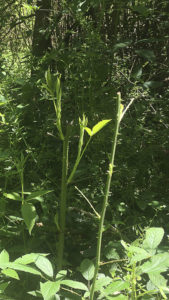
There are many species of native plants that deer will browse, and for the most part, they make up a large portion of a deer’s diet. This group is often referred to as forbs, and the species deer eat varies from season to season. In spring and fall, the sunflower family provides lots of forage for deer. Asters are commonly eaten in the spring, as are the various species of goldenrod. Verbena, a square-stem green plant with opposite leaves, is heavily eaten during the spring and summer and is a top-notch deer forage. A well-fertilized weed patch can do as much good for deer as an agricultural green patch. Deer readily eat weeds such as teaweed or leaf flower.
Agriculture
Clover should be at the top of this list. Planted in the fall, a good clover patch will provide deer with high-quality protein forage during the important spring and summer growing season. Of course, peas and beans also provide great nutrition for deer. American jointvetch is my go-to summer and fall plant for deer. This legume will provide forage until the first frost and the bowhunter with a great stand location.
There are hundreds of different plant species that deer will browse, but not all provide the good nutrition deer need. If a manager learns to recognize these important ones, he will be able to develop a sound deer program that should produce desired results. If the hunter learns to recognize these important browse plants, he will have a leg up on other hunters. Literature is available from many sources about the plants that deer eat in Louisiana that will help you learn identify them in the field.
